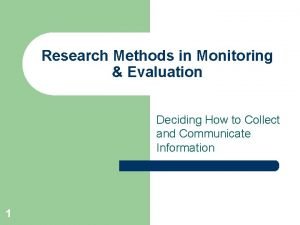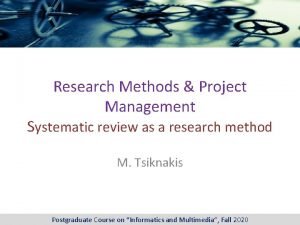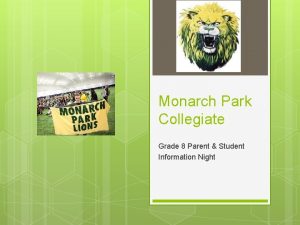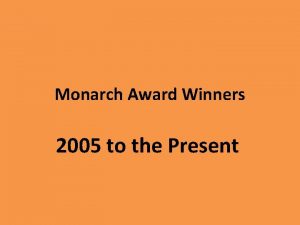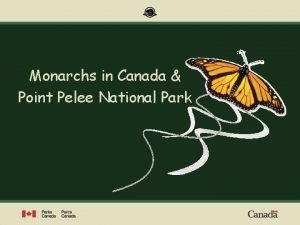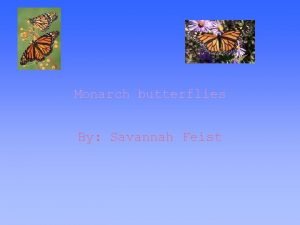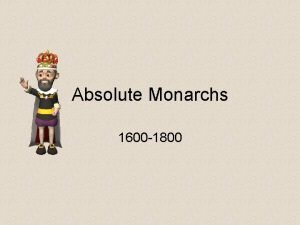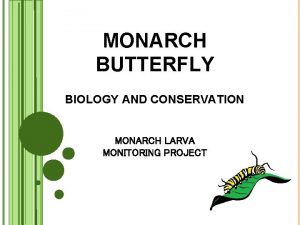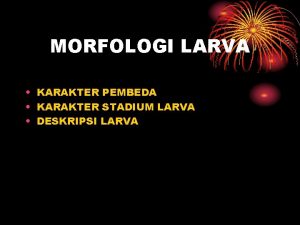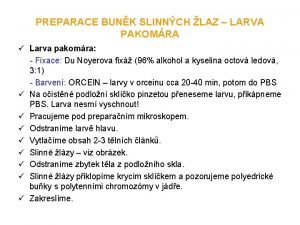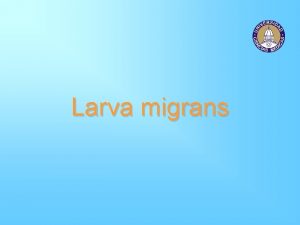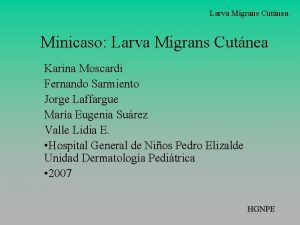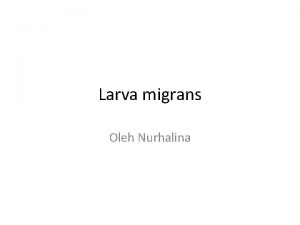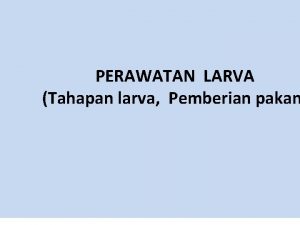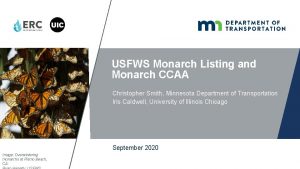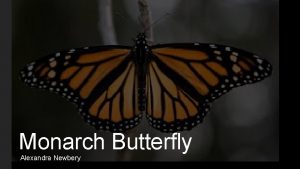Monarch Larva Monitoring Project Methods Research and Monitoring

















- Slides: 17

Monarch Larva Monitoring Project Methods

Research and Monitoring Understanding and conserving monarch populations requires: • Broad temporal and spatial scales of data collection • Variety of research approaches Citizen science is key to finding the answers we need. Monarch Lab

Monarch Larva Monitoring Project • Study monarch population dynamics during breeding season (summer) • How and why populations vary in time and space • Impossible without an army of citizen scientists

MLMP Volunteers � Over 1, 200 registered sites in 2015 in USA, Canada, and Mexico (not all are actively monitored). � Volunteers monitored 350 sites in 2015. � Volunteers range from kindergarteners to retirees. � Many schools, nature centers, and museums monitor MLMP sites. � Volunteers have a variety of occupations (from teacher to aircraft inspector). � Many � Only participate for > 1 year. 7 states in the USA do NOT have MLMP monitoring sites.

How Do I Become a Citizen Scientist? Monarch Lab

MLMP Training �In Person and Online Training ◦ 316 people attended in person training between 2013 -2015 �Regional Trainers ◦ MN, TX, CO, AZ, CA, IA, MO, MS, TN, IL, WI, MI, IN, GA, FL, NC, VA, WV, OH, PA, MD, PA, NY, MA, VT �Trainings Country Occur Across the Monarch Lab

Online Training � MLMP Training Introduction � Identification � Migration of Monarch Stages and Overwintering Kiphart Ecology � Site Description and Measuring Milkweed Density � Rearing �A Monarch Lab and Survival Study Day in Your Site! Monarch Lab

MLMP Protocol • Monitoring Site • • Gardens, parks, roadsides, prairies restored/natural area (need milkweed) Site Description (Yearly) • • • Location, size, type Milkweed species and density Monarch Lab Weekly Monitoring • • Estimate monarch densities Track rainfall/weather conditions Quantify milkweed quality Estimate monarch survival Monarch Lab

Activity #1: Monarch Density � Conduct a count of monarch eggs and larvae present at a monitoring site on a known number of milkweed plants � Activity #1 is a per plant measurement of monarch density at your site � Record data in the field and enter online ◦ #1 A: Weekly Summary ◦ #1 B: Season Summary ◦ #1 C: Monarchs per Milkweed

Weekly Monitoring Densities

Monarchs in Minnesota

Activity #2: Rainfall Data � Mount a rain gauge at your site to obtain measurements of weekly or daily rainfall data at site � We are interested in following the weather patterns at monitoring sites

Activity #3: Monarch Survival � Volunteers collect larvae and rear indoors. Record the outcome: Adult monarch, parasitoid, dead of another cause � Volunteers record monarch Carol Fraser survival � Tachinid flies (specifically Lespesia archippivora) are a common monarch parasitoid C. Gatchel

Activity #3: Monarch Survival �Parasitism �MLMP ◦ ◦ ◦ Data Entry Needs: Date collected Instar at collection Result # of adult flies Emergence from monarch

Activity #4: Milkweed Characteristics �Species �Height �Herbivory �Flowering status �Immediate monarch density �Senescence �Invertebrates

Anecdotal Reports � Not a regular monitor, but want to report an observation? � Monitor regularly, but want to report an observation made away from your site? Monarch Lab

MLMP Citizen Science Your contributions will aid in conserving monarchs and their threatened migratory phenomenon, and advance our understanding of butterfly ecology. � All MLMP datasheets and instructions are online. � MLMP � Stay staff are available for questions: info@mlmp. org connected on social media and sign up for the MLMP newsletter.
 Research methods in monitoring and evaluation
Research methods in monitoring and evaluation Research methods in project management
Research methods in project management Monarch awards 2006
Monarch awards 2006 Monarch park ib program
Monarch park ib program Monarch park school
Monarch park school Monarch awards 2006
Monarch awards 2006 Monarch 155 mm
Monarch 155 mm Sophie cathérine bonaparte
Sophie cathérine bonaparte Monarch academy baltimore
Monarch academy baltimore Point pelee monarch migration
Point pelee monarch migration Was russia an absolute monarchy
Was russia an absolute monarchy Monarch park ib
Monarch park ib Monarch bookkeeping
Monarch bookkeeping Feist monarch
Feist monarch Was russia an absolute monarchy
Was russia an absolute monarchy What is an absolute monarch *
What is an absolute monarch * Trickster archtype
Trickster archtype Monarch group
Monarch group
